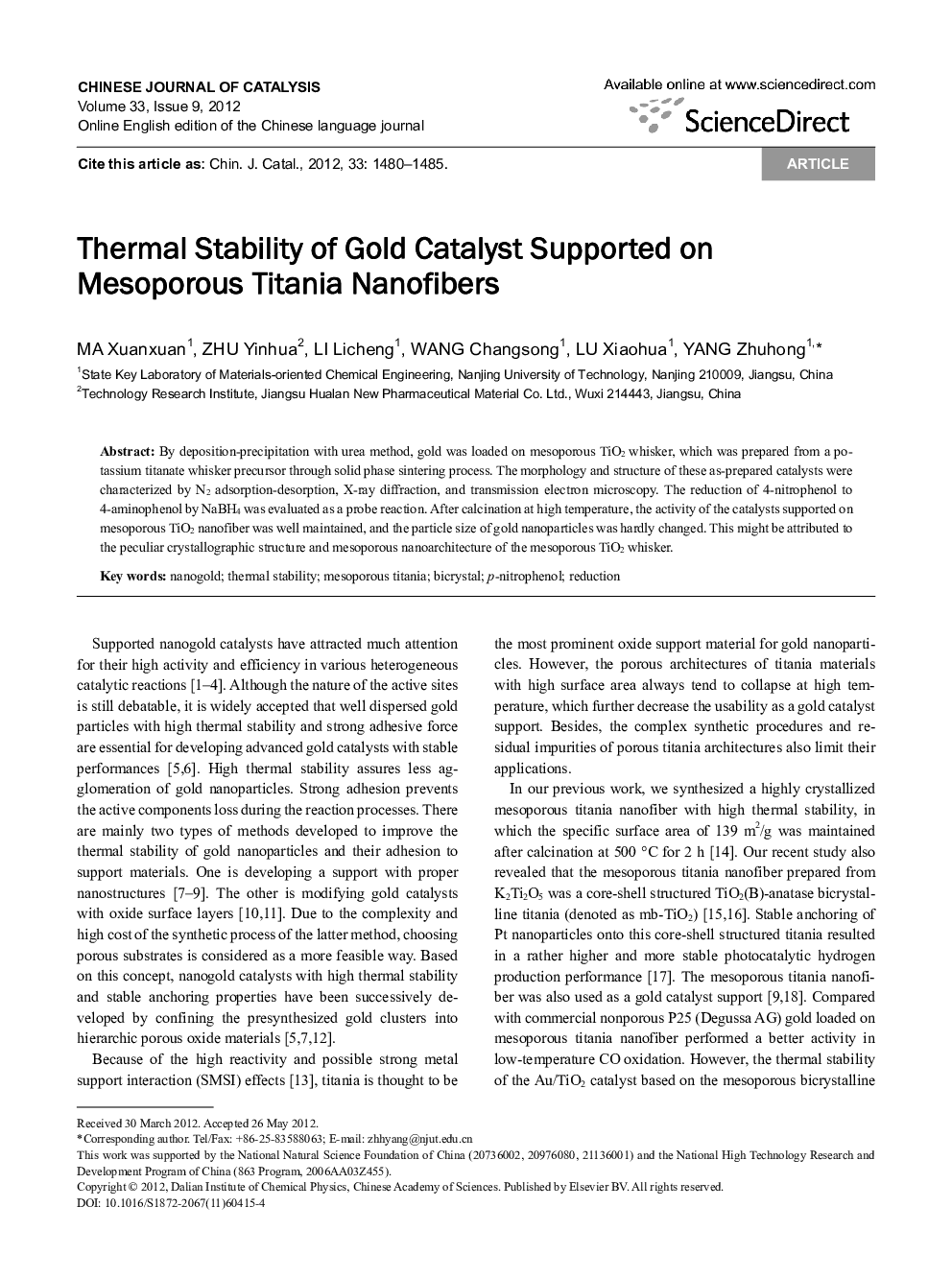| Article ID | Journal | Published Year | Pages | File Type |
|---|---|---|---|---|
| 60208 | Chinese Journal of Catalysis | 2012 | 6 Pages |
By deposition-precipitation with urea method, gold was loaded on mesoporous TiO2 whisker, which was prepared from a potassium titanate whisker precursor through solid phase sintering process. The morphology and structure of these as-prepared catalysts were characterized by N2 adsorption-desorption, X-ray diffraction, and transmission electron microscopy. The reduction of 4-nitrophenol to 4-aminophenol by NaBH4 was evaluated as a probe reaction. After calcination at high temperature, the activity of the catalysts supported on mesoporous TiO2 nanofiber was well maintained, and the particle size of gold nanoparticles was hardly changed. This might be attributed to the peculiar crystallographic structure and mesoporous nanoarchitecture of the mesoporous TiO2 whisker.
摘要以二钛酸钾晶须为前驱体, 通过固相烧结工艺制备了介孔 TiO2 晶须, 然后使用沉积沉淀法将 Au 纳米颗粒担载于其上, 并采用低温 N2 吸附-脱附 X 射线衍射及透射电镜等技术对催化剂的形貌和结构进行了表征, 以 NaBH4 还原对硝基苯酚 (PNP) 为探针反应, 评价了催化剂的活性及稳定性. 结果表明, 500 丰C 热处理前后, 介孔 TiO2 负载的 Au 纳米颗粒的平均粒径变化不大, 且催化 PNP 还原活性得到了很好的保持. 这主要与介孔 TiO2 晶须独特的双晶构型及介孔结构有关.
Graphical abstractThe unique crystallographic structure and mesoporous architecture of the TiO2 whisker ensure the excellent sinter-resistant properties of gold nanoparticles. Consequently, the activity of the catalyst supported on the mb-TiO2 is well maintained after high temperature calcination.Figure optionsDownload full-size imageDownload as PowerPoint slide
